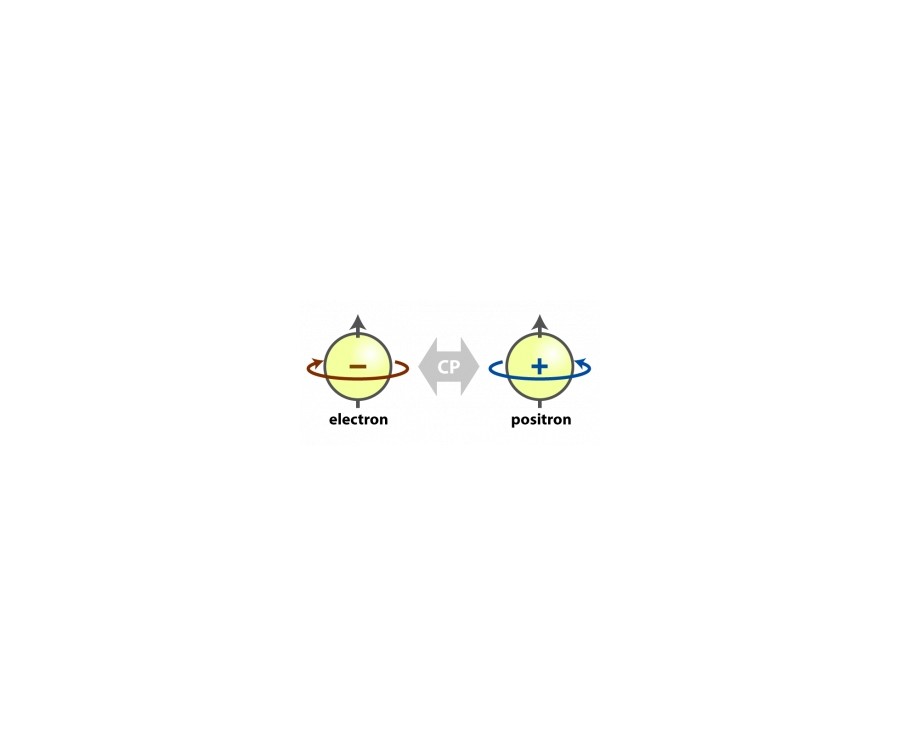John Carlos Baez on Nostr: Now that it's on your mind: what's the difference between matter and antimatter? 1) ...
Now that it's on your mind: what's the difference between matter and antimatter?
1) Antimatter has the opposite charge. This is true not just for electric charge, but also the subtler kinds of charge that affect the strong and weak nuclear forces.
2) There's a lot more of one than the other! Nobody knows why. But if there were more antimatter, we'd call that one 'matter' - and we'd be just as happy.
3) More subtly, there's a difference in "handedness" between matter and antimatter! For example, a neutrino moving very fast tends to spin *clockwise* around its axis of motion. An antineutrino tends to spin *counterclockwise*.
If you switch matter and antimatter and view what's going on in a mirror, they behave almost the same way. This is called 𝗖𝗣 𝘀𝘆𝗺𝗺𝗲𝘁𝗿𝘆.
4) But CP symmetry isn't perfect. Antimatter viewed in a mirror behaves a tiny bit differently from matter viewed the usual way! This was discovered in 1964 by James Cronin and Val Fitch, who won a Nobel for it.
In the Standard Model of particle physics there are 2 numbers that describe how much things change if you switch matter and antimatter and also view things in a mirror. One is for quarks and it's tiny: about 0.0003. So this effect is very small for quarks.
The other one is for neutrinos and it's bigger: we don't know it precisely, but we know it's less than 0.03.
Nobody knows why these numbers have the values they do! We just measure them experimentally.
The good news is that now you know ALL the ways that matter and antimatter are different... as far as we know. So probably you mainly need to learn more about item 4, which is explained here:
https://en.wikipedia.org/wiki/CP_violation#P-symmetry

1) Antimatter has the opposite charge. This is true not just for electric charge, but also the subtler kinds of charge that affect the strong and weak nuclear forces.
2) There's a lot more of one than the other! Nobody knows why. But if there were more antimatter, we'd call that one 'matter' - and we'd be just as happy.
3) More subtly, there's a difference in "handedness" between matter and antimatter! For example, a neutrino moving very fast tends to spin *clockwise* around its axis of motion. An antineutrino tends to spin *counterclockwise*.
If you switch matter and antimatter and view what's going on in a mirror, they behave almost the same way. This is called 𝗖𝗣 𝘀𝘆𝗺𝗺𝗲𝘁𝗿𝘆.
4) But CP symmetry isn't perfect. Antimatter viewed in a mirror behaves a tiny bit differently from matter viewed the usual way! This was discovered in 1964 by James Cronin and Val Fitch, who won a Nobel for it.
In the Standard Model of particle physics there are 2 numbers that describe how much things change if you switch matter and antimatter and also view things in a mirror. One is for quarks and it's tiny: about 0.0003. So this effect is very small for quarks.
The other one is for neutrinos and it's bigger: we don't know it precisely, but we know it's less than 0.03.
Nobody knows why these numbers have the values they do! We just measure them experimentally.
The good news is that now you know ALL the ways that matter and antimatter are different... as far as we know. So probably you mainly need to learn more about item 4, which is explained here:
https://en.wikipedia.org/wiki/CP_violation#P-symmetry
